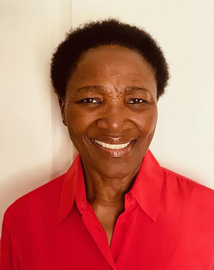
The Covid-19-forced pivot to remote teaching has upended productive discourse about evidence-based pedagogical practices. The recurring theme in the myriad of recommendations and best practices for engaging students in remote learning is the need to communicate care and hope, and to maintain a sense of connectedness. The pandemic is a great equalizer; the resultant uncertainties, anxiety and stress affect us all. The current situation reaffirms the notion of the interconnectedness of learning and emotions. Questions about instructional practices inevitably generate questions about assessment. Are the best ways of assessing student learning in times of crisis different?
Reassessing Assessment
Teaching remotely calls for adaptation, and adjustment of learning outcomes, assessment and course content. High-stakes assessments like the traditional midterm and final may seem out of place in the current situation. Proctoring these exams in the remote learning environment raises some concerns. In a survey of 826 faculty at over 600 US colleges and universities, two-thirds of participants admitted that they changed their assignments and exams. Recommendations for alternative assessment methods range from several small quizzes to replace a big test to short-answer questions, student presentations, and take-home exams.
Moreover, there is a recurring message that a portion of course assignments and learning activities should address themes that are relevant to the historic crisis that students are witnessing. Creating a reflective space for students to use the lens of their disciplines to take stock of the trauma that has affected all of our lives can solve two issues. Reflective assignments can get students to curate their pandemic experience, and provide an assessment of their learning.
Discursive and Performative Reflection
Reflection is often included as an assessment requirement in higher education (Grossman, 2008; Samuels & Betts 2007). There are different kinds of and approaches to reflection. Differences notwithstanding, the definitive purpose of reflection is to help us create meaning from experience, and reexamine future experiences. Ryan (2012) identified two modes of representing reflection: Discursive and performative. Discursive forms of deconstructing and reconstructing experience can be demonstrated through media for example paper-based, digital, or live oration. Performative modes of expression include still or moving visual forms, and embodied performances in dance or dramatic forms illustrated with music, sound and props. Here is a structure for scaffolding students’ discursive and performative reflections on the Covid-19 crisis through the lens of their respective disciplines:
- Report and respond–introduce the experience and explain why it is important.
- Relate—the experience to self and learning, and to similar experiences.
- Reason—appraise the experience using multiple perspectives.
- Reconstruct—Reframe how the experience might shape your life and learning in the future. Show new understandings.
- Use first person voice.
- Use thinking and sensing verbs for example I believe, I feel, I understand (Ryan, 2012).
Reflection Representations
Three elements are critical to the accomplishment of the assignment. First, students choose the modes of expression of their reflections. Second, assessment is low stakes, but reflections must meet specified expectations as illustrated above. Third, students present their pandemic-era learning reflections to the entire class on Zoom or in Canvas. Here are some suggestions:
- 3-2-1: Students reflect on three things they did not know before (pre-Covid-19), two things that they are curious about, and one thing that they would like to change. Reflection can be presented orally on Zoom or as a video recording in Canvas.
- Letter to future students: Students write a letter to a future generation describing their experiences, observations, and feelings.
- Blogs: Students write a series of blog posts to describe their pandemic-era personal life, and learning experiences.
- Still or moving pictures with written or oral narration: Students use a collage of pictures or artwork to articulate their pandemic experience.
- Performance: Students use expressive media for example dance, calculated movement, acting, or music to convey their pandemic-era learning and life experiences.
Why Reflect on Pandemic Experience?

University teachers and students have made an incredible transition to remote teaching and learning due to Covid-19. The global health crisis has caused major disruptions to our lives. Should we ignore the proverbial elephant in the room in our Zoom or Canvas classrooms or engage students in problematizing it? Doing the latter should help to humanize remote teaching and learning. Good teaching is responsive to students’ needs and their learning contexts. Discursive and performative reflections constitute an empowering way of
acknowledging, and celebrating students’ resilience, grit and successes in the face of insurmountable odds. What a courageous way to wrap up the Spring term, and say goodbye to students!
References
Grossman, R. (2009). Structures for facilitating student reflection. College Teaching, 57(1), 15-22.
Ryan, M. (2012). Conceptualizing and teaching discursive and performative reflection in higher education. Studies in Continuing Education, 34(2), 207-223.
Samuels, M. & Betts, J. (2007). Crossing the threshold from description to deconstruction and reconstruction: Using self-assessment to deepen reflection. Reflective Practice, 8(2), 269-283.

Funmi Amobi is an instructional consultant and College Liaison in Oregon State University’s Center for Teaching and Learning. Funmi provides consultations to faculty in individual and small group settings to support teaching excellence and student success.

Leave a Reply